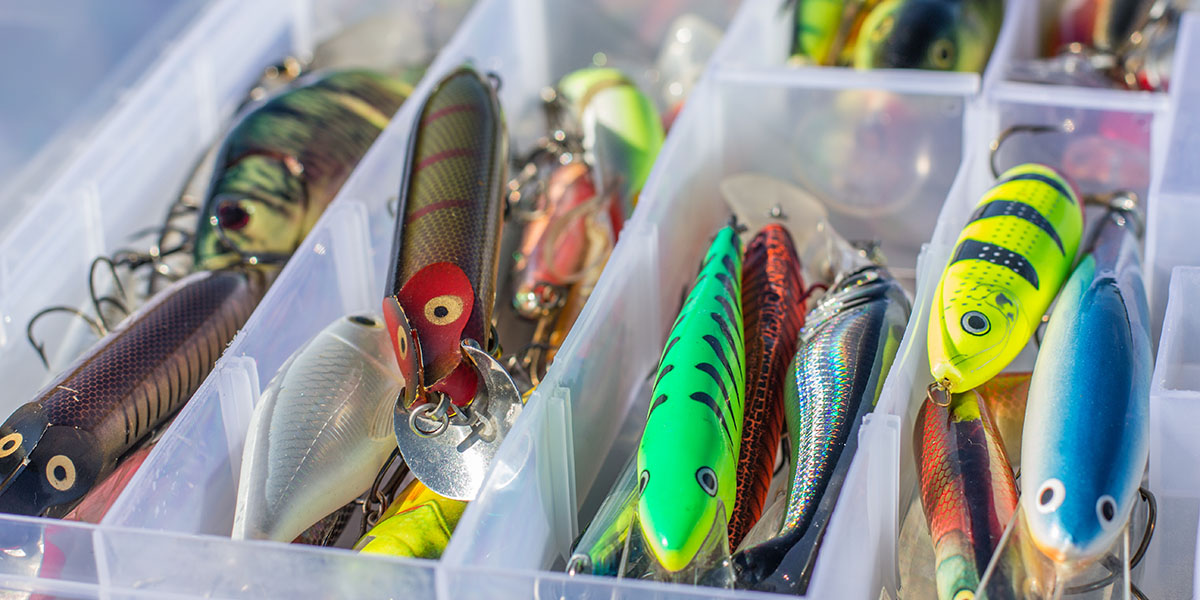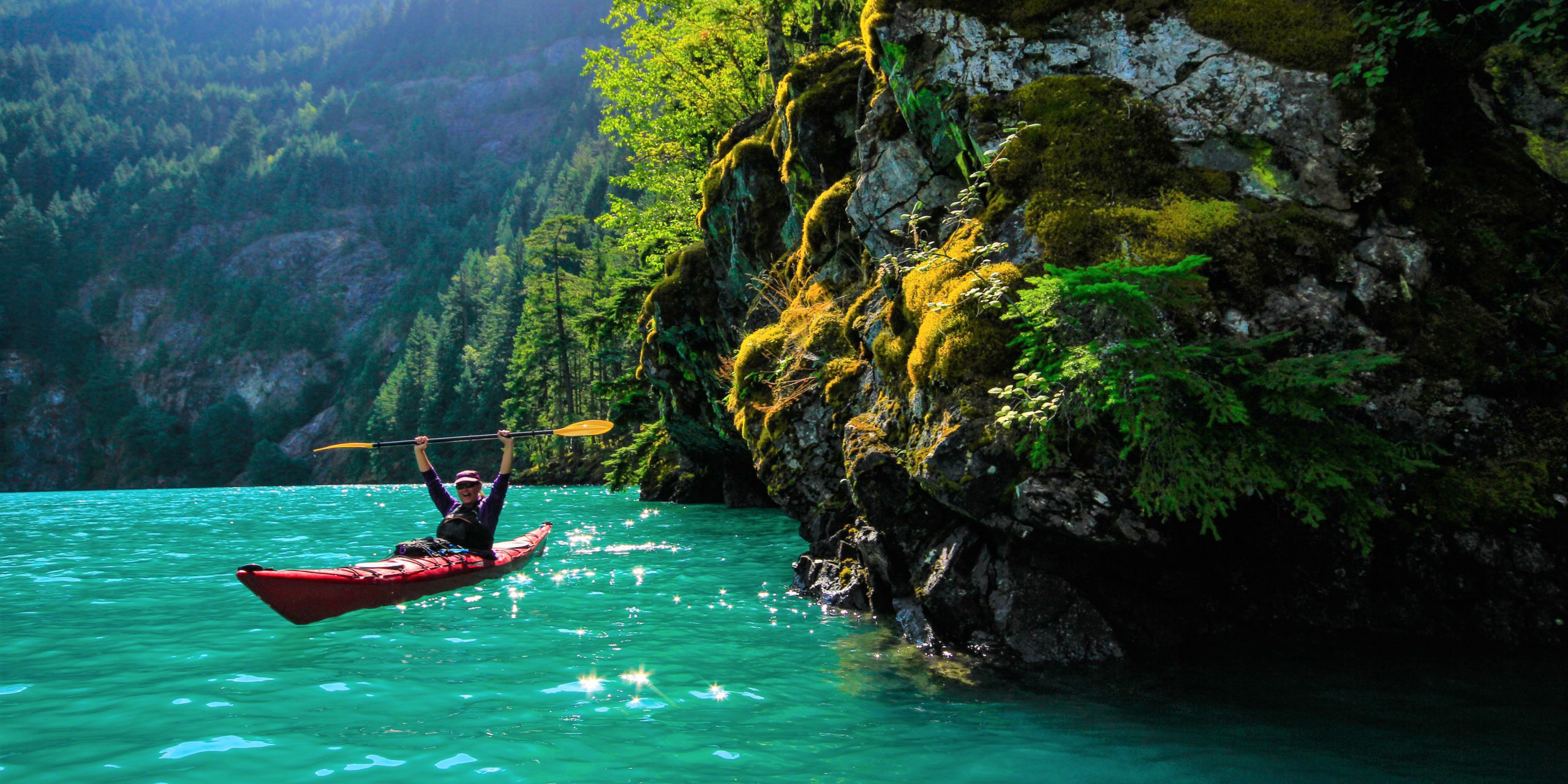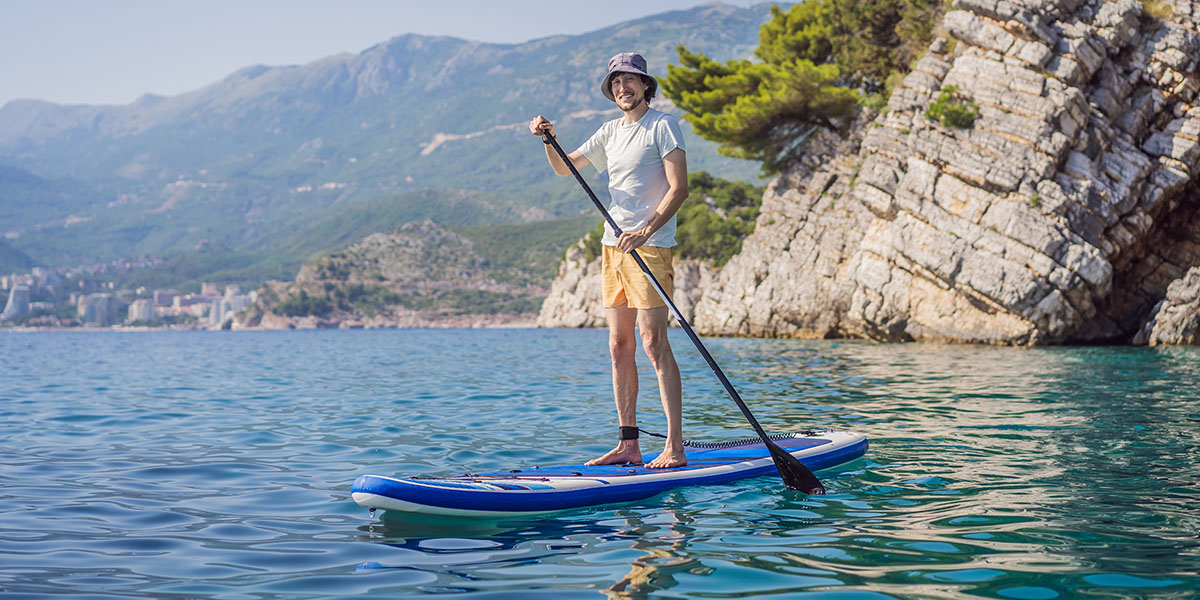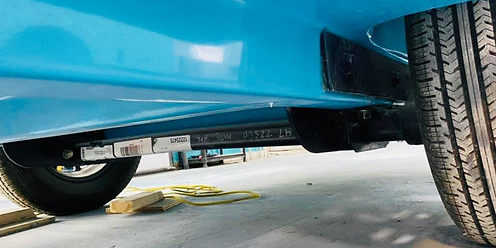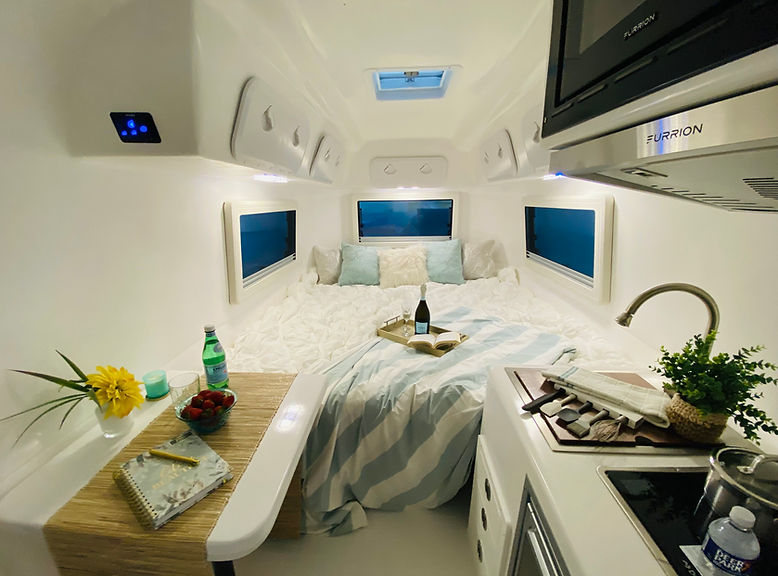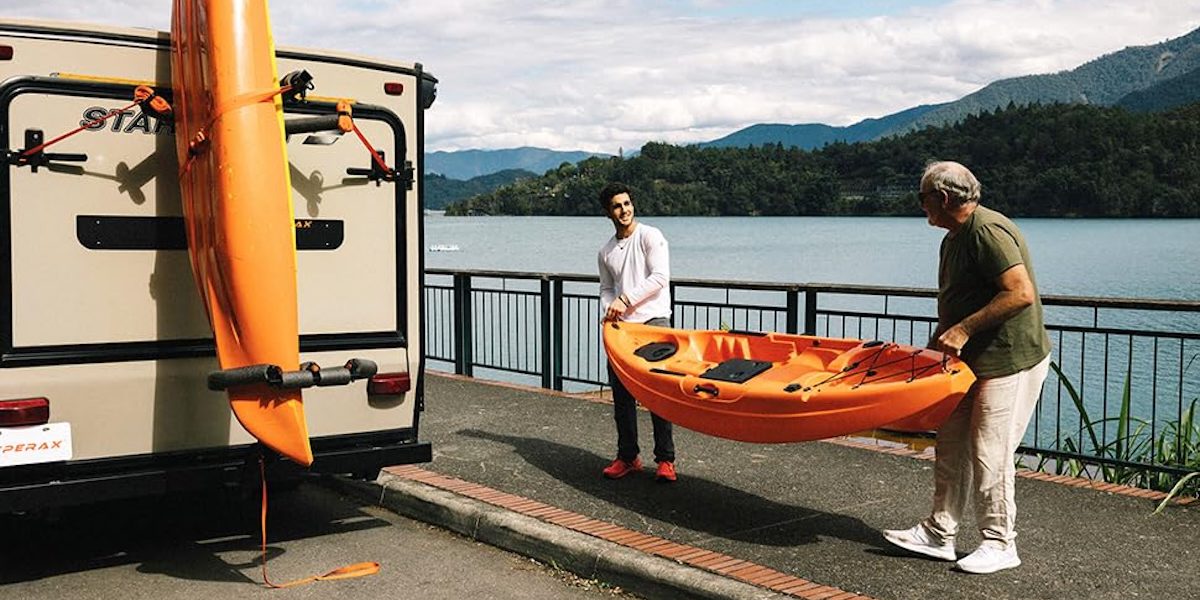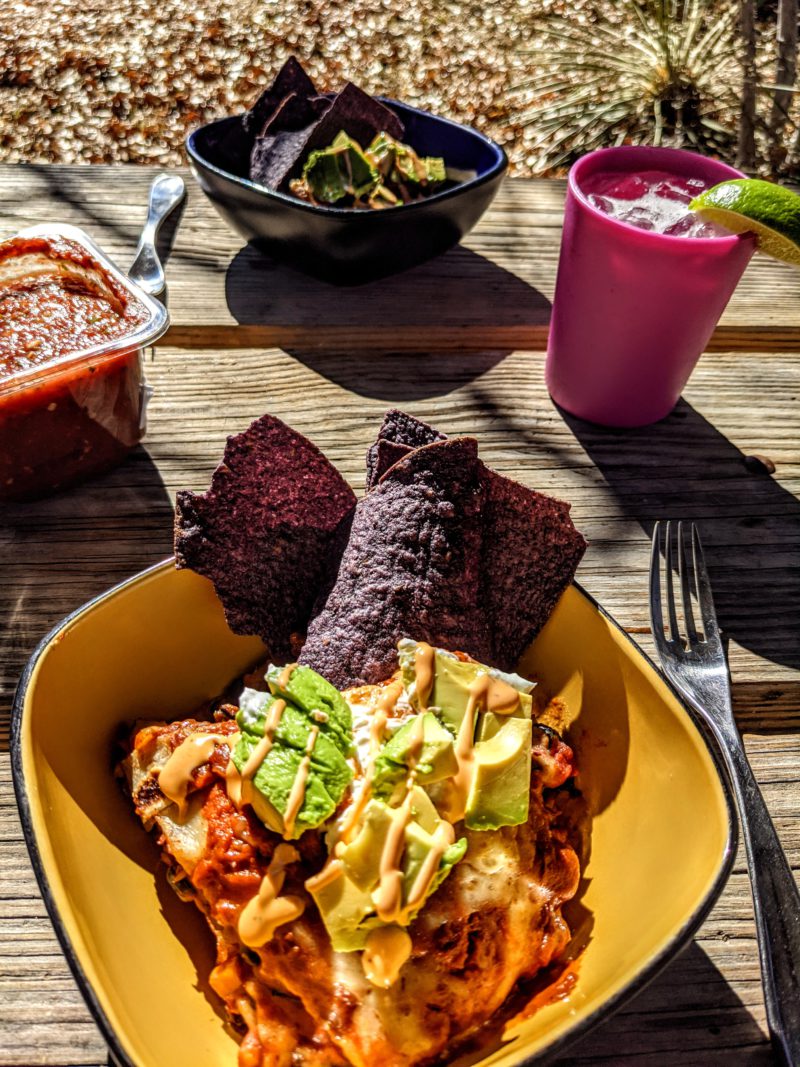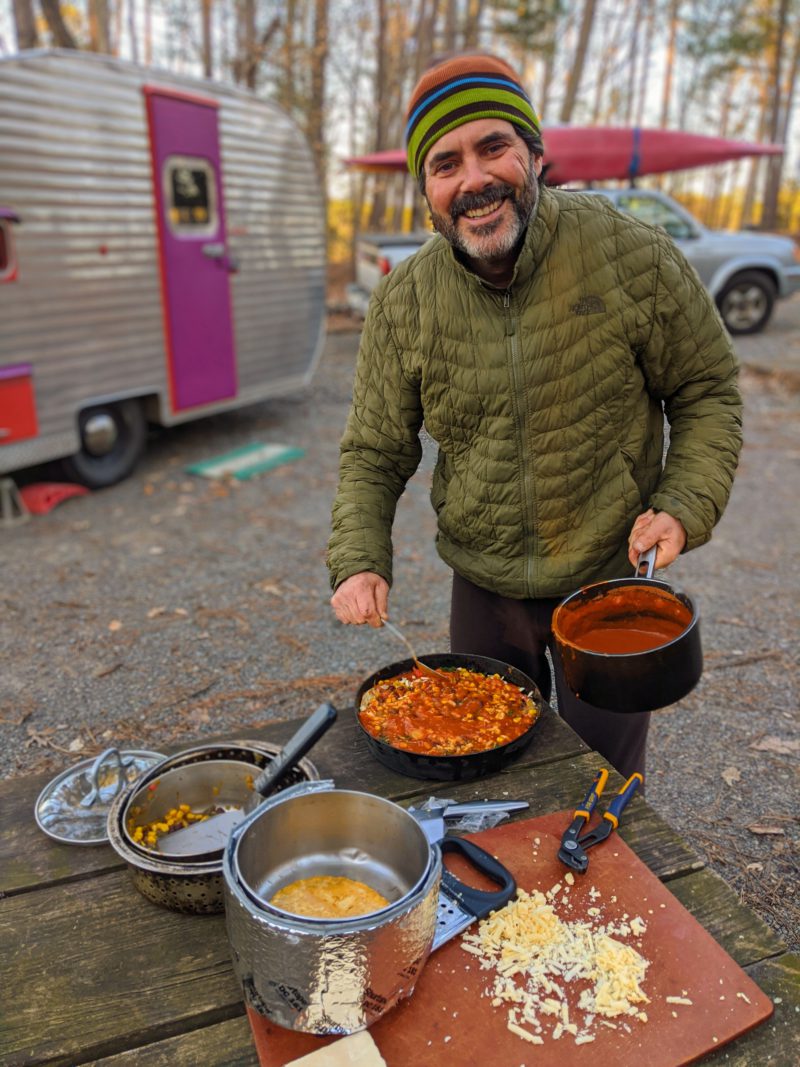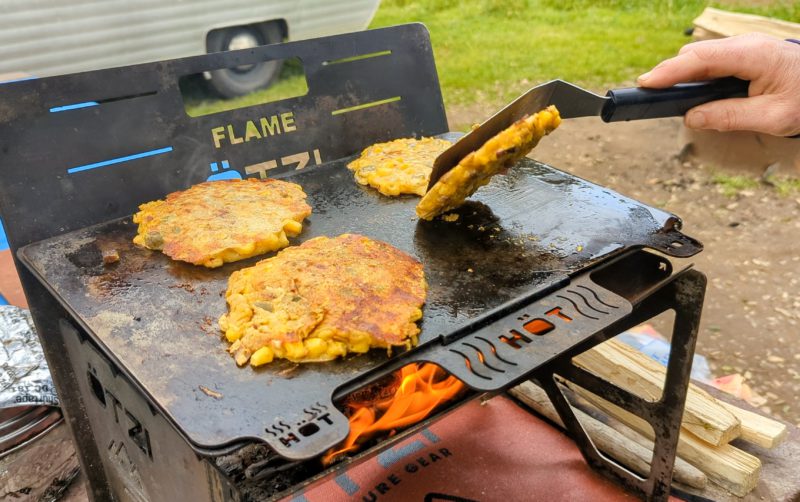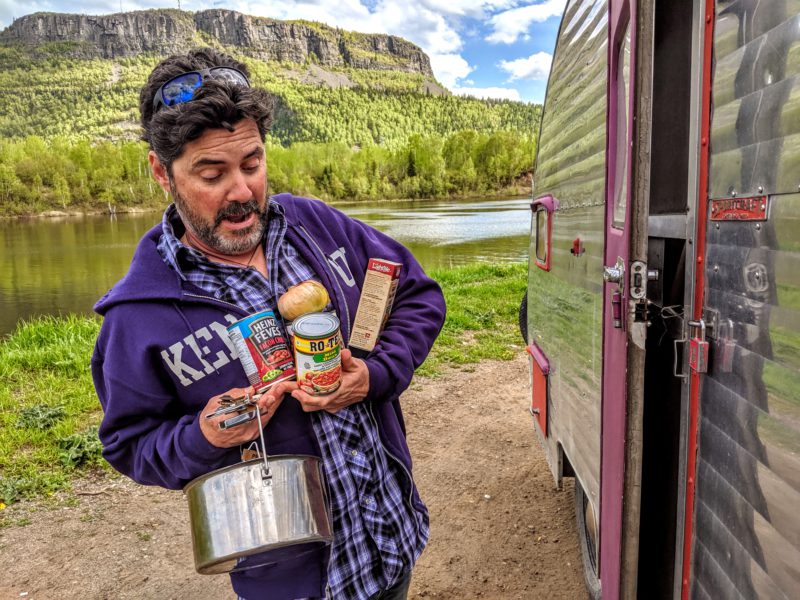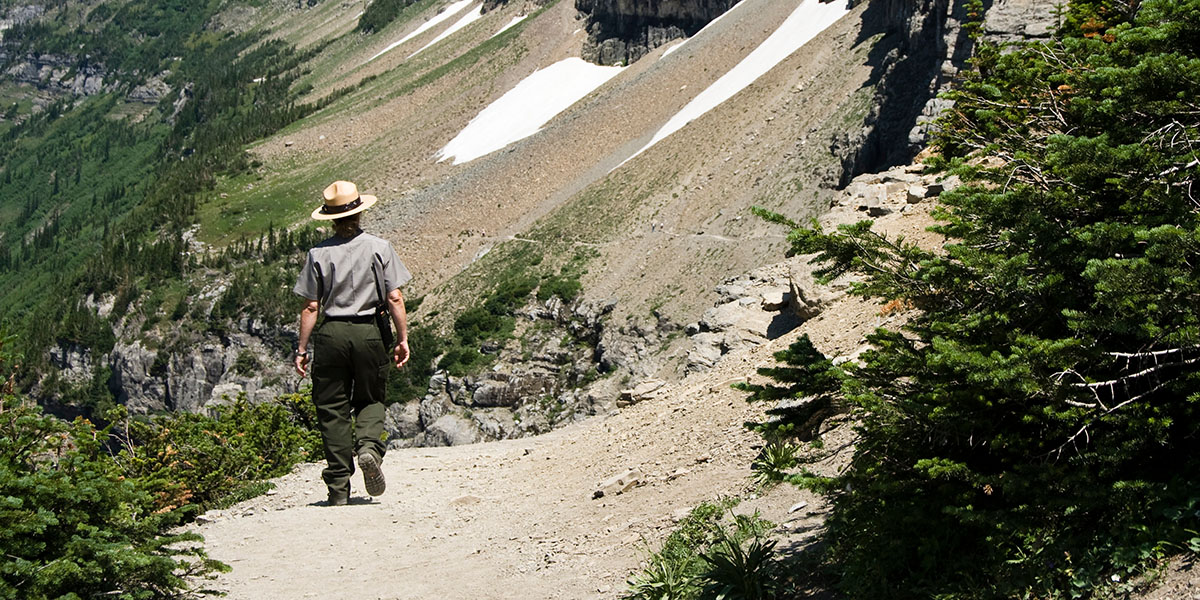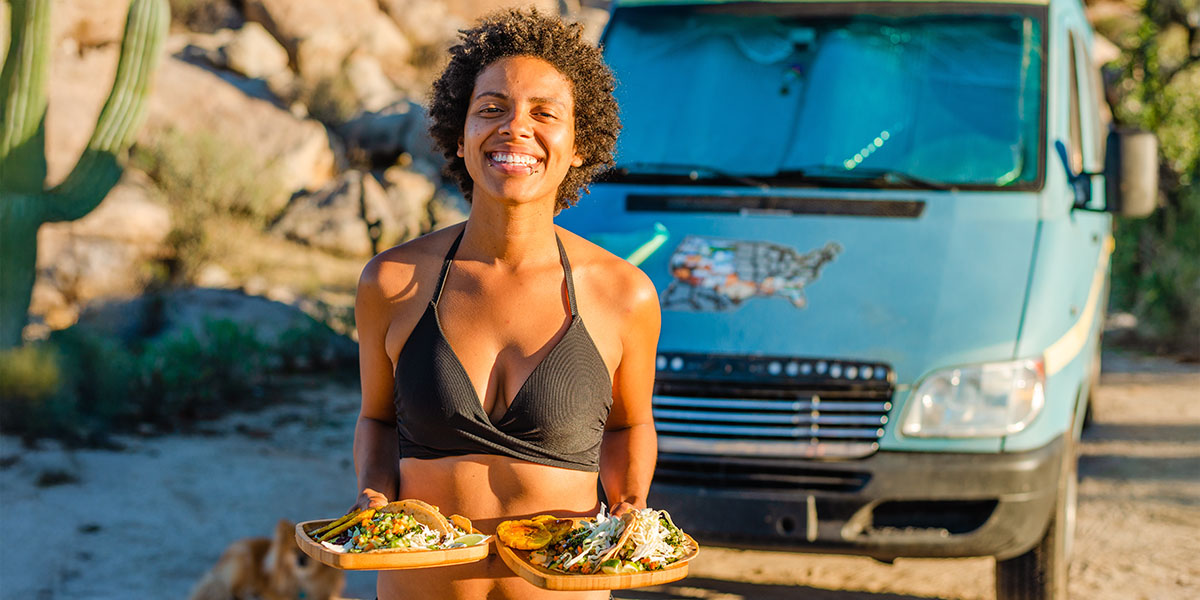It’s an open secret. RVing can open a door to some of the best fishing holes and hot spots in the country. Interestingly, though, it’s not always intentional. Just taking an RV trip into the wild may land you in the perfect spot to cast a line. Imagine camping near a quiet river at the base of an isolated mountain. There’s not a soul in sight. The water laps against the river bed as you set up your rig. A glance into the cool stream reveals a big beautiful trout waiting for its next meal. But if you don’t have some RV fishing tackle at the ready for such an occasion, it all becomes one enormous tease.
You don’t want this scenario to catch you unprepared. And you don’t have to. By keeping five essential pieces of fishing tackle in your RV, you will always be ready to cast a line — even if you stumble unexpectedly into the perfect spot.
No. 1: A Ready-to-Go Rod
Amateur anglers might be surprised to discover that there are so many types of fishing rods. Each type caters to a genre of the sport, with variations branching out from here. Unfortunately, there isn’t any one rod to serve them all. Instead, when shopping for the right rod, consider the specific styles of fishing you’d like to master.
Telescoping Fly Rod
Simplicity for the Fisherman on the Fly
Telescoping and collapsible fly rods are widely popular for traveling fisherman. Each type meets a specific performance or fishing style. We chose the Tenkara Telescoping Fly Rod for its rugged simplicity and time tested effectiveness. The methodology is rooted in traditional Japanese fly fishing. Similar to traditional fly fishing, the Tenkara approach is much simpler and sometimes more effective.
Spinning Rod
Universality for the Everyman Angler
Some heavier waters require more than a fly rod for landing big fish. A medium-weight spinning rod, like the St. Croix Triumph Spinning Rod, can cross a variety of water types. It’s the most versatile of all rod types. These rods can be used in lakes, ponds, rivers, creeks, inland coastal waters, and even the ocean surf.
Saltwater Rod
Heavy-Duty to Reel in the Big One
If you enjoy fishing on the ocean, you will want to consider a travel surf rod. The Okuma Traveling Surf Rod is a heavy duty collapsible rod. You can cast further and reel in heavier fish through the surf. It will also accommodate a heavier line. Since RVs aren’t known for having a lot of space, this 4 piece construction will fit nicely into almost any compartment.
No. 2: A Variety of Fishing Lines
Traveling in an RV offers the opportunity to fish in a variety of habitats. It also hinders your ability to carry all the different types of fishing rods and recommended equipment due to space limitations. You can make up for this by having a good index of line weights and types. In the grand scheme of things, fishing line doesn’t take up much space. (That is, if you can keep it from getting tangled in your RV fishing tackle box.)
Fly Fishing Lines
Three types of fly lines are essential for fly fishing.
- Floating lines. This line is essential to keep your line “floating.”
- Sinking line. This line differs from the floating line by the rate at which it sinks. You can get a range of different sinking lines.
- Sink-tip fly lines. This line is a combination of the floating line, and the sinking fly line. Generally speaking, the first eight to 16 feet of the tip line will be sinking, with the remainder of your line floating.
Spinning Rod Lines
For your versatile spinner rod, you can have anything from a two-pound line for spooky creek trout, or as heavy as an eight- to 10-pound line for big lake fish.
Heavier Surf Lines
For ocean fishing, including ocean surf and brackish fishing, you will want a variety of heavier lines depending on what’s biting. I can’t tell you how many times I felt the tug of a big juicy fish, only to have it bite my line in two. If you are fishing for a toothy catch like snook or blue fish, consider a steel leader on the end of your line.
Also keep in mind:
- A medium surf rod line weight is going to be around 12 to 25 pounds.
- A heavy surf rod line weight will be 17 to 40 pounds.
No. 3: An Essential-Only Tool Box
Your essential tool kit can be simple enough to fit in a small fanny pack, or it can spill over into several 5 gallon buckets. Since RVers don’t have the luxury of space, it’s probably best to stick with the necessities. A medium/small RV fishing tackle box, like the Lure Lock Deep with Trays, would be prudent to keep your hooks, sinkers, lines, and lures. A few basic tools should be added to the mix:
- Hemostats and pliers. Hemostats will remove the hook from the fish, and sometimes needle nose pliers will be required to pull out a heavy hook. Pliers are also better for squeezing sinkers onto your line.
- Line cutters. Finger nail clippers often work better than scissors for this task.
- Pocket knife: A dedicated fishing knife is essential for bait cutting without double dipping into your silverware drawer. Your wife will thank you.
No. 4: Time-Tested Lures and Bait
Bait encompasses many different categories depending on what your habitat is. After years of fishing in a variety of watery ecosystems, we have found the best bait to be live and native. Minnows, earthworms, stoneflies, crickets, and other living fish food can usually be sourced at your location. However, there are plenty of scenarios in which a lure or fly will be what’s required.
Lures
Lures can include a variety of spinners including jigs, spoons, crank baits, spinnerbaits, plastic worms, and much more. Your habitat and experience level will determine which of these you choose to carry.
Flies
Flies are lures specific to fly fishing. There are thousands of varieties, but generally speaking they imitate flies, nymphs, and various life stages. Flies will either float or sink. It can be expensive to procure a good collection because they are usually hand tied. Each habitat will pair with a specific fly variety for that type of year.
Live Bait
For inland fishing, live bait doesn’t require any specific tools. Just turn over some rocks or logs, or dig up some worms with your own two hands. If you are near the ocean, you should consider investing in a cast net, like the BasicGear cast net. This investment requires more time than money. Learning how to catch bait fish with a cast net is a humbling journey in patience and practice. But if you love to fish on the coast, it could be the best investment of time and money you’ve ever made.
No. 5: Some Bring-It-Home Gear
No matter what you catch, you’re going to need to put it somewhere. Unless you’re fishing from the window of your rig, you need to store the fish that you’ve caught. This could be as small as a Bass Pro Shops Trout Net for your catch and release trout or a bucket or cooler for your intended dinner. A 15-inch stringer is a compact tool for collecting your fish in one spot, in or out of the water. If you’re catching bait fish you will want a bucket to keep the bait, and an aerator to keep them alive. (And don’t forget to bring extra batteries for the aerator!).
In Addition to Your RV Fishing Tackle …
It would be prudent to study the regulations pertaining to any specific area you intend to fish in. These regulations could include catch limits, size limits, open seasons for specific species, delayed harvests, and about a thousand other rules you will be expected to recite backwards. Local bait shops and fishing stores are a good place to get informed.
Don’t forget to bring your fishing license wherever you bring your pole. A separate fishing license will likely be required for every state you intend to fish in. It can be quite an investment, but a worthwhile expenditure. What better place to put your money than something that brings you joy?
